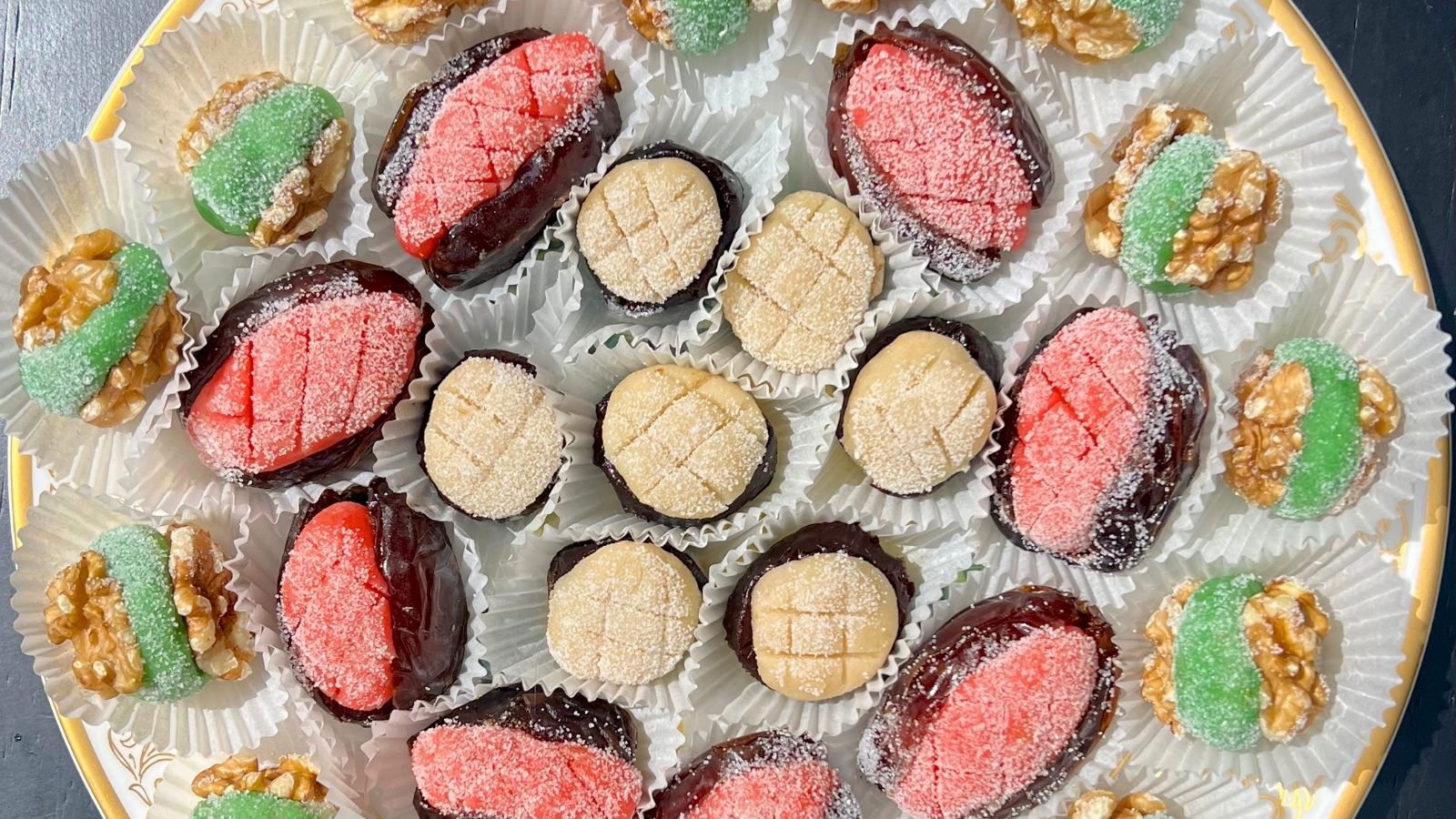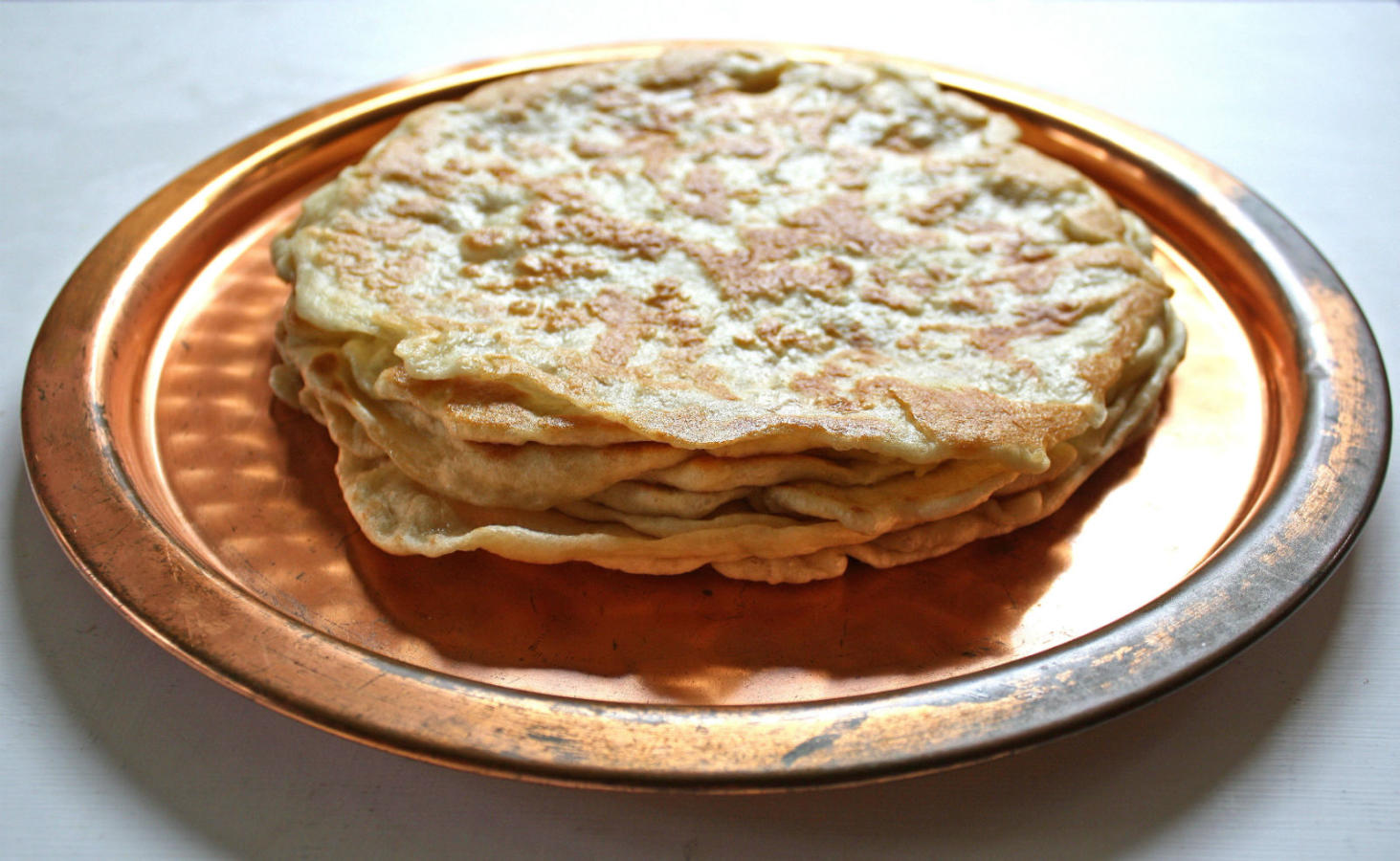For Moroccan Jews, marzipan is central to celebratory occasions and Jewish holidays. Made from ground almonds and sugar, this sweet, sophisticated confection has a long and storied past.
From their origins and domestic cultivation in Western China, almonds traversed the Silk Road to the Middle East. Almonds thrived in the temperate climate of the Levant, and soon enough they were crushed and mixed with honey. Marzipan even appears in the romantic folk tales of “One Thousand and One Nights;” in one instance, it’s described as an aphrodisiac.
The recipe traveled to Andalusia, the Muslim-ruled area of the Iberian Peninsula, where it acquired the name marzipan from the Latin term Martius Panis which literally means “March bread.” During the Golden Age of Spain, the cities of Toledo, Granada and Seville enjoyed a period of convivencia, a time of Christian, Muslim and Jewish coexistence and cultural exchanges of literature, philosophy and cuisine. With the expulsion of 1492, the Jews carried the recipe for marzipan to their new homes in North Africa and the Ottoman Empire. (Over the centuries, their Christian neighbors continued making marzipan and in Toledo, this treat is still made in the old Jewish areas and is protected by a designation of origin status.)
Almost simultaneous to its introduction in the Iberian Peninsula, the Turks introduced marzipan to Eastern Europe. It became a beloved specialty in Hungary and Italy, from where it traveled to become a festive treat that is enjoyed all over Europe.
The Nosher celebrates the traditions and recipes that have brought Jews together for centuries. Donate today to keep The Nosher's stories and recipes accessible to all.
Marzipan comes in all shapes and sizes. In Northern Europe, it’s shaped into little pigs for Christmas and eggs for Easter. Sweden boasts the prettiest prinsesstårta (“princess cakes”), iced with pastel pink and pale green marzipan. In Italy, Greece and Malta, marzipan is artfully shaped into brightly colored, perfectly detailed miniature fruits and vegetables.
Tiny marzipan fruits are also a traditional Passover treat for Iranian Jews. Syrian cuisine features “marcaben,” marzipan flavored with orange blossom water and shaped into delicate roses.
For Moroccan Jews, no celebration is complete without marzipan-stuffed dates, walnuts and prunes. They are always served at engagements, weddings and bris ceremonies, as well as on Jewish holidays (the gluten-free recipe lends itself perfectly to Passover).
These delectable treats are also served at Mimouna, the joyful celebration that marks the end of the Passover holiday. The doors of Moroccan Jewish homes are thrown wide open, and everyone is welcome to partake in the festivities. There are greetings of “tir’bah u’tissad,” a Judeo Arabic blessing that means “may you prosper and succeed.” The women are dressed in brightly colored caftans and the men wear white djellaba gowns and the red tarboosh hat.
The tables are adorned with talismans of luck, fertility and prosperity: five coins in a bowl of flour, five fava beans laid out on flour, a fresh fish on a platter, a green tree branch or sheaf of wheat or barley, white milk in a pitcher, and five white eggs in a bowl of flour to symbolize purity.
At the center of the celebration is piping-hot mufleta, a pancake served straight out of the skillet with honey or homemade fruit preserves. But with their beautiful pastel colors and their pleasing, sugar-dusted symmetry, the marzipan-stuffed dried fruit and nuts symbolize sweetness and an abundance of overflowing blessings.
In the past, making marzipan was a very time-consuming task. The almonds had to be prepared with boiling, removing the skins and grinding. Nowadays, almond flour is readily available. We hope you try your hand at making this delectable sweet.
Note: Store the stuffed dates in an airtight container for up to two months. You can replace the dates with prunes or walnuts.
Marzipan Stuffed Dates
Marzipan-stuffed dates, a cherished Moroccan Jewish delicacy, combine sweet almond paste with Medjool dates to create a festive, gluten-free treat enjoyed during holidays like Mimouna and Passover.
- Total Time: 1 hour 15 minutes
- Yield: 36 dates
Ingredients
- 36 large Madjool dates
- 2 cups almond flour
- 1 ¼ cups confectioners’ sugar
- ¼ cup water
- 1 tsp almond extract
- 1 tsp orange blossom water or rose water
- red and green food coloring
- granulated white sugar, to finish
Instructions
- Make a horizontal slit in each date (do not cut all the way through) and remove the pits.
- In a food processor fitted with a blade, combine the almond flour and sugar. Slowly add the water a few drops at a time, then add the almond extract and orange blossom or rose water.
- When the mixture starts to form a dough, pulse 10 times.
- Divide the mixture into two bowls. Add a few drops of red food coloring in one, and green food coloring in the other. Knead each dough separately, making sure not to stain with the other color.
- Allow the mixture to sit for 1 hour.
- Roll small cylinders of almond paste, the same length as the dates but half the diameter, then stuff each date.
- Score the exposed almond paste with the dull side of a paring knife to create a diamond pattern, then roll the date in sugar.
- Prep Time: 15 minutes + 1 hour setting time
- Cook Time: 0 minutes
- Category: Dessert
- Method: One-pot
- Cuisine: Holiday






Leave a Comment